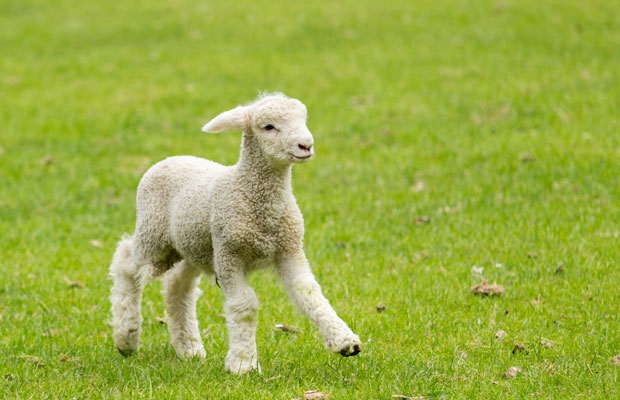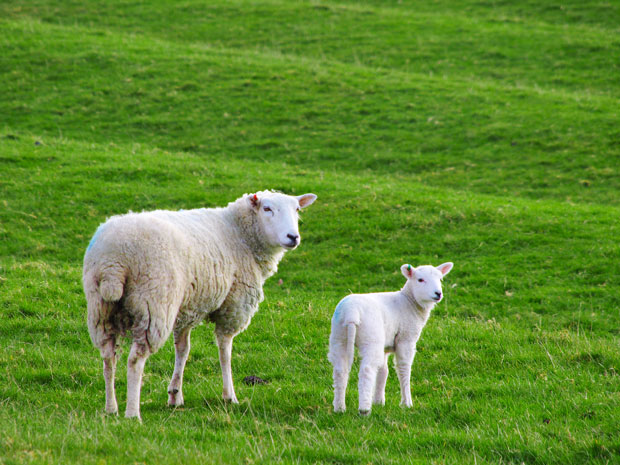12 tips for sheep in spring

Words: Dr Clive Dalton
Getting ready for lambing is the main priority, and this means being prepared for surprises like early lambs which weren’t planned and which often die.
If you have not lambed ewes before, check with an experienced neighbour who can help you sort out what you need. Vet clinics are also good information sources, and how to safely store animal health products.
Wet and cold together kill newborn lambs fast, so shelter is the first priority. Use farm sheds or simple shelters in the paddock. Covers for all multiple and small lambs are a good investment, and an old electric blanket is a top idea for hypothermic lambs that need reviving as it provides a nice constant heat.
It’s vital to check that each ewe’s teats are working, which means catching them. This is where being familiar with your sheep and knowing how to get them calmly and quietly into yards is important or the stress of doing this may cause mismothering.
Don’t assume a lamb nuzzling below a ewe and wagging its tail has found a teat and is feeding. Keep checking that all lambs (especially multiples) are full – they’ll have round, lower bellies – and if not either hand-rear them, or you can try topping it up morning and night with a bottle feed but leave it in the paddock the rest of the time with its mother and siblings.
Peak feed demand is about four weeks after lambing, so it’s no good waiting for feed to grow. It has to be available for hungry ewes, and the lambs too, which start to eat grass by a month old. You can check this by looking out for their tiny faecal ‘marbles’.
Check with your vet if your flock vaccination programme is adequate. If you have vaccinated ewes before lambing, you may not need to do the lambs at docking. Pulpy kidney and tetanus are the main concerns, as the former always seems to kill your best-looking and biggest lambs. Ask about scabby mouth vaccine too as humans can catch that from sheep and the virus may be on your farm.
The best measure of production is ‘lambs weaned/100 ewes joined with the ram’. It should be over 120% these days, regardless of the breed of sheep. If it’s not, then get help to check where things are going wrong so you can fix it.
It’s well worth tagging ewes to denote their age group, and record any ewe that has lambing problems, udder problems, or which only has a single. These days, twins should be the norm as all breeds (except meat breeds) have the genes for high fertility.

Most modern ewes can rear triplets but it’s better to remove one. Quads need to be reduced to two lambs too, and either fostered (which can be difficult) or hand-reared. Lamb prices are predicted to be good this season so hand rearing could be worthwhile.
When docking, the tail dock should be long enough to cover the vulva of a ewe lamb, and the equivalent in the male. Lambs should be able to wag their docks when passing faeces, which tends to keep them cleaner. See the Sheep Code of Welfare available on the MPI website .
Don’t drench lambs at docking as they get immunity from their mothers’ colostrum – only start at weaning if they need it. Mature ewes should not need drenching either before lambing or at docking, despite all the advertising specials to sell you drench. Don’t drench any sheep before you have some definitive veterinary evidence using a Faecal Egg Count (FEC) proving an anthelmintic is needed, and then check the right one is being used.
Skinny ewes prior to lambing need feed more than drench. As the grass comes away, ewes and lambs will get dirty and may need dagging as the Aussie green blowfly is active early in the season.
Ewes and growing lambs need plenty of feed and clean water as lambs start really competing with their mothers for grass after about 6-8 weeks old. Check for hazards in the paddocks too (including water troughs) as lambs can be lost when racing around. Cover troughs with mesh or put some large rocks in the middle to help them get out.
TIPS
- Get everything ready for lambing in good time, and be prepared for those surprise very early lambs.
- Have plenty of good colostrum (sheep, cow or powdered) on hand as it’s the key to good lamb survival.
- Learn how to tube feed starved lambs, and warm them up.
- Good shelter for new-born lambs and regular checking to see they all have suckled is also critical.
- Only ewes with large udders will feed triplets, but even then a triplet may be left hungry.
- Ensure all ewes suckle twins and hand rear the surplus, or foster them on other ewes (but know success in never guaranteed).
- Record all ewes that cause problems at lambing, and mark them for later culling – the sooner the better to save feed.
- Ewes and lambs need plenty of good clean water, but cover troughs to prevent lambs from drowning.
- Dock and castrate lambs with rubber rings before they are 6 weeks old, and learn how to do this correctly. Don’t dock tails too short.
- Dag all dirty sheep and plan shearing when wool is 100mm long.
- Keep checking for early blowfly attacks.
- Lambs are valuable this year so be on watch for thieves.
Love this story? Subscribe now!
 This article first appeared in NZ Lifestyle Block Magazine.
This article first appeared in NZ Lifestyle Block Magazine.

